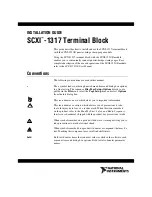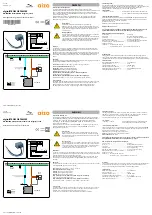
Parameterization and commissioning
EL6751
89
Version: 3.5
"CAN Node" tab
Fig. 106: "CAN Node" tab
Node ID
Enter the general CANopen device node address here. If you select the ”Auto Adapt PDO COB Ids" box, the
default identifier for the process data object can also be carried out after changing the node ID.
Profile no.
After CANopen, the parameter 0x1000 "Device Type" contains the number of the supported device profile in
both the lowest value bytes. These are entered here and compared at the system StartUp with the device
parameters present. If no device profile is supported, the parameter will contain the value 0.
Add info
The additional info is located in both the highest value bytes of the object directory entry 0x1000 (device
type).
A set/actual configuration comparison is only made if the profile no. or add. info (i.e. object directory entry
0x1000) is set to a value other than zero. If the expected data at the system start do not comply with the
values present, the StartUp of this node will be interrupted and a corresponding error message will appear in
the Diag Tab.
Guard time
The guard time determines the interval in which the node is monitored (node guarding). 0 signifies no
monitoring. The value entered is rounded up to the next multiple of 10 ms.
Lifetime factor
Guard time x lifetime factor determines the watchdog length for the mutual monitoring of card and CANopen
nodes. 0 indicates that the CANopen node is not monitoring the card. At 0 the card takes the guard time
directly as the watchdog length.
The FC 510x / EL6751 also support the Heartbeat protocol and initially attempt to start this form of node
monitoring on the CANopen node (write access to the objects 0x1016 and 0x1017 in the object dictionary). If
this attempt fails, guarding is activated. The guard time as producer heartbeat time and (guard time x lifetime
factor) as consumer heartbeat time are entered. In this case a Heartbeat telegram is transmitted with the
smallest configurable guard time (the guard times can be individually set for each node).
















































